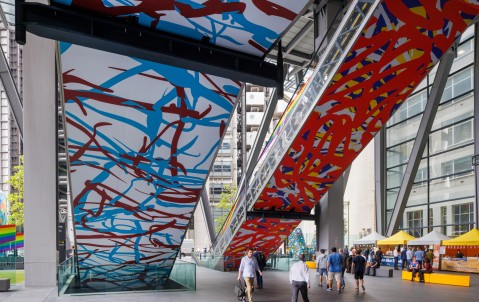Every day, London’s Air Ambulance – a client for Hiscox Global Flying* –treats on average five seriously injured patients. Captain Neil Jeffers, Chief Pilot, takes us along for a flight onboard ‘call sign Helimed 27’, high above the capital.
How does your working day begin?
Two of us (both pilots) will meet at RAF Northolt in West London, where our helicopter is hangared, at around 7.20am. Half an hour later, after pre-flight checks, we will fly to our daytime base which is the helipad at the Royal London Hospital where we’ll wait for our first call or ‘mission’.
Although we can fly in the dark our landing options are very limited so we’ll usually return to Northolt at sunset.
How many missions do you fly daily?
It’s hard to say but typically it averages at around three. The helicopter is replaced by cars after dusk or in adverse weather conditions. Driving under blue lights, the cars deliver the same team and equipment to the scene of serious injury.
Is it difficult finding a place to land in London?
The flying we do here is unique in its challenges and it’s one of the aspects of the job I really enjoy. Cranes are a big hazard although strangely it’s not overhead wires that are the big problem in London – most of them are buried underground –it’s the rubbish. When you come into land, our helicopter can be re-circulating something like three tonnes of air a second. If there’s cardboard or paper waste for example, it can get sucked up into the rotors.
We can land anywhere there is an 80ft by 80ft space. We often get to the scene of an incident before the police so we have our own spotlights and sirens to warn people. In the context of London’s Air Ambulance, landing in Hyde Park is considered to be an easy one. Bridges, multi-story car parks, or box junctions all make good landing spots. We’ve also landed in places like Trafalgar Square and Horse Guards Parade – proper London landmarks.
What happens when you get to the scene of an incident?
We are one of the few air ambulance operations that flies with two pilots. One of us will stay with the aircraft while the other will lend a hand to the medical team we have on board. A misconception about us is that we usually pick up the patient and take them to hospital – in fact that only happens in 20% of cases. Our mission is primarily to bring the hospital to the patient rather than the patient to the hospital.
Our medical team on board have the world class medical expertise to stabilise the patient and can even carry out complex procedures such as open heart surgery at the site of the accident if necessary.
What types of accident do you attend?
Road traffic collisions are the most common mechanism of injury we tend to – at 34%. 27% will be for people who have fallen from height. 23% will be for people who have suffered a penetrating wound – typically a stabbing or a shooting.Other mechanisms of injury we typically see include incidents on the rail network, industrial accidents and drownings.
Does anything stop you flying?
As I mentioned we try not to fly in the dark but, as we operate under visual flight rules, we also don’t fly if the cloud base is very low and visibility is poor.We also need clearance from Air Traffic Control and can, if necessary, even hold up air traffic at Heathrow if we’re attending an emergency.
What telephone number do I ring to call an air ambulance?
You’d be amazed how often I’m asked that! You dial 999 and ask for an ambulance and they’ll route the call depending on the circumstances. The majority of people also don’t always realise we’re an air ambulance and will come up to us once we’ve landed and ask us what we’re doing here...
What’s the big challenge for London’s Air Ambulance?
London has just one helicopter for the 10 million people who live, work and travel within the M25 and we would like to have a second aircraft to increase aircraft availability over London. And we would like to extend the hours we can fly in the summer. We need to keep raising money to get there. Some of our funds come from London’s NHS Trusts but we largely rely on charitable donations to keep flying.
And lastly, do you get irritated when you’re in the car sitting in the traffic?
Oddly, no - I’m quite resigned to the traffic in London. But I do confess that I’m not envious when I look down at the traffic on the A140 on my ‘commute’ back to Northolt at the end of the day.
More details of London’s Air Ambulance, and how you can donate, can be found at londonsairambulance.co.uk
*Hiscox Global Flying provides Loss of Licence insurance to London’s Air Ambulance. Loss of Licence insurance is available to pilots and air traffic control officers and provides financial help in preparing for an alternative career if an aviation career is brought to an end following the loss of a Class 1 medical certificate.
Hiscox Global Flying currently insures over 10,000 commercial pilots and trainees who fly for a variety of operators, ranging from leading airlines and niche executive companies to air ambulances and training schools, around the world.
For more details, please contact Ian Groves, Polina Konstantinova or Kate Lindridge at [email protected] or on +44 (0)207 448 6170




